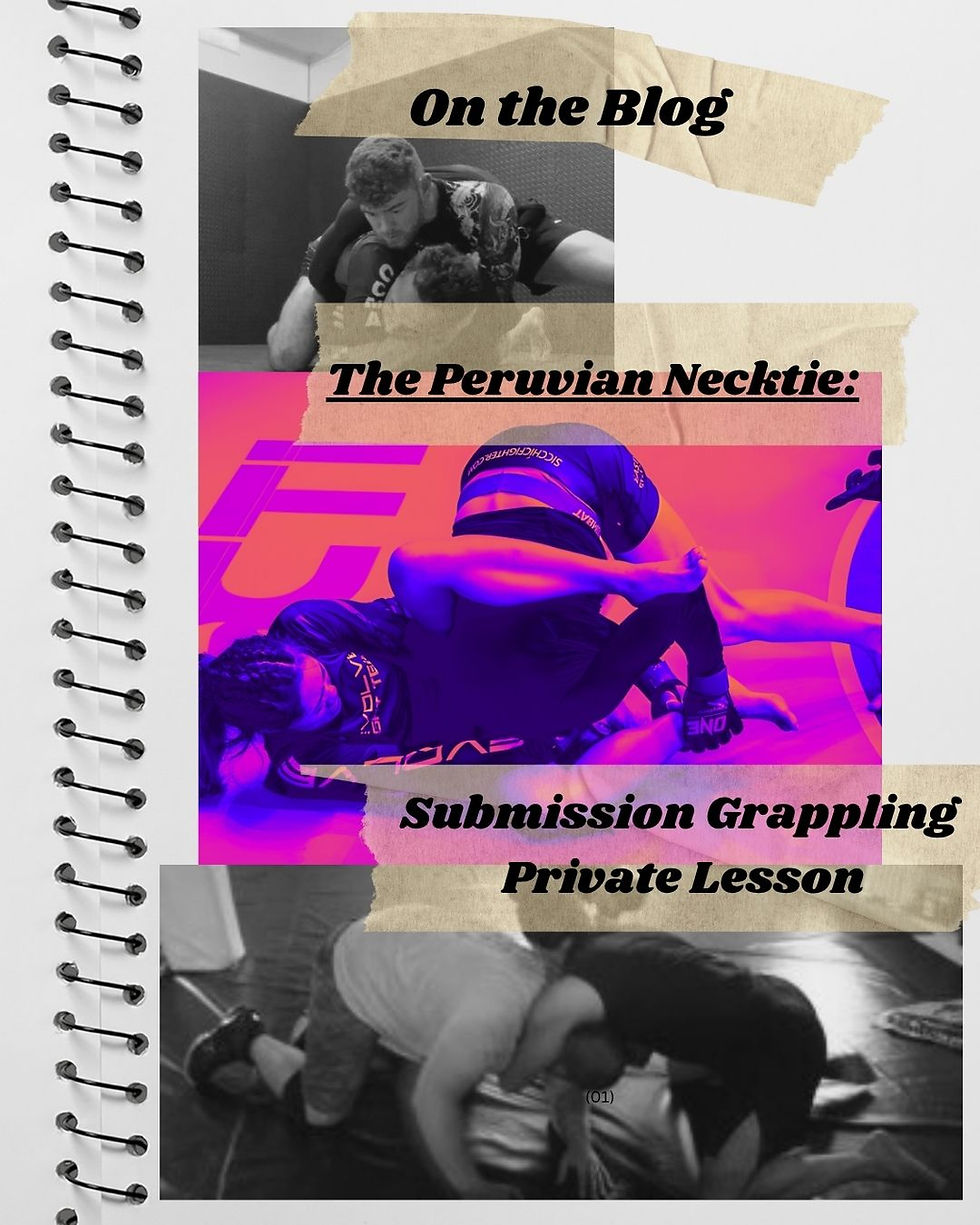Introducing The Peruvian Necktie: Submission Grappling Private Lesson
- jamie03066
- 3 days ago
- 2 min read
13.10.2025

My couple clients' eighth hour of their Submission Grappling Private Lesson course continued their work in the turtle position. We began with a few rounds of specific sparring attacking and defending the position, where I brought in a technique known as the Peruvian necktie.
Focus On Targeting The Front Of The Turtle Position (Submission Grappling Private Lesson)
For the majority of this Submission Grappling Private Lesson course, we have been mainly defending and attacking the back. The game has mainly concentrated on getting hooks and trying to achieve back mount or attacking from the side to roll into side control. I have shifted the emphasis away from here to look at anacondas and guillotine chokes and saw it as an ideal opportunity to attack with the Peruvian necktie.
The Peruvian Necktie (Submission Grappling Private Lesson)
The trademark submission of Tony DeSouza is a tailor-made attack on the turtle position. It is often described as a modified guillotine, but I think this description is not very accurate. The execution, where the arm and head are encircled, puts it into the arm-triangle category for a start. Secondly, the leg positioning looks more like the way an individual executes an arm-bar than the closed guard position often associated with grounded guillotines.
Sparring Ideas
I had both my private students spar each other to establish a reverse arm-triangle position. Starting with one person with an overhook and an arm over their partner's neck, the game was to link arms or free the arm and head. Then we began with the arms linked, pitting the objective to complete the hold with breaking the grip.
The Need To Adapt & Vary
Following the ecological dynamics triangle of performer, environment, and task, I noticed that both my clients were struggling with the Darce hold version. They were getting there, but clearly, it wasn't ideal for them. We sought other versions to better accommodate them. Our solution was a much deeper variation involving stepping over the opponent first before linking arms and rolling back into the submission.
There are many different versions of this hold, including some that reverse the order of the legs (putting the leg over the back as opposed to over the head first). This just highlights my belief in putting the individual at the center of training practice and listening to feedback from my clients with a combined will to adapt accordingly.













Comments